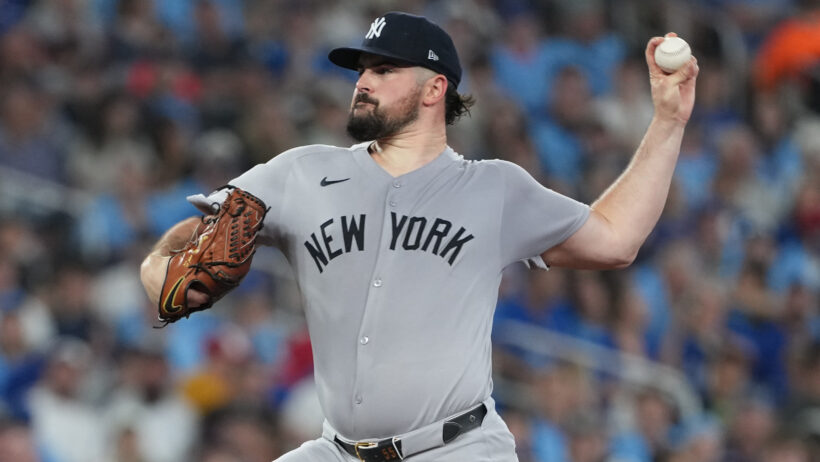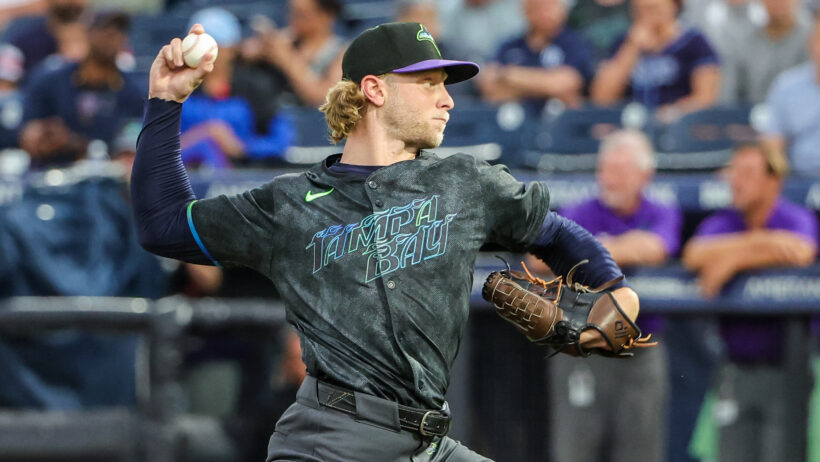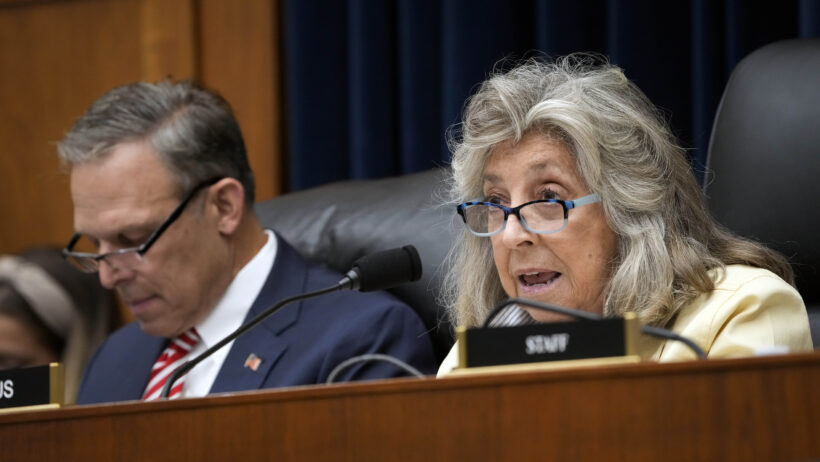The Big Fix: How to Save College Basketball from Itself
By Ryan Murphy in College Basketball
Updated: January 17, 2018 at 9:38 am ESTPublished:
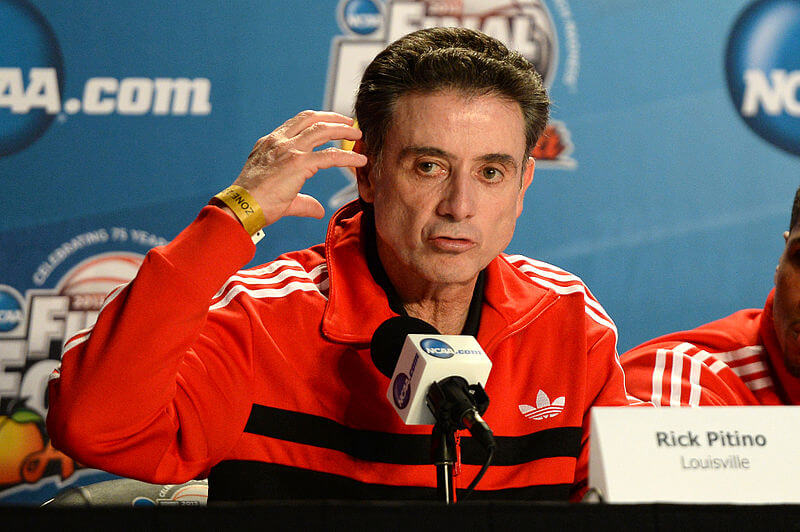
Rick Pitino found himself at the center of a major FBI investigation last week when it was alleged he was involved in a “pay for play” agreement to attract a five-star recruit to Louisville. The school has since begun the process of terminating Pitino and more heads are expected to roll soon as the FBI continues its investigation. To date, ten other people have been charged and arrested, including four college basketball assistant coaches.
Pitino’s actions were blatantly against the rules, but should they have been? The NCAA has always prohibited athletes from earning revenue despite the fact that a number of other parties — including the NCAA, itself — profit handsomely from their services. Last year alone, the NCAA made $1 billion from the broadcast rights, corporate sponsorships, and tickets sales from March Madness. Those earnings were then divided among the various conferences and split among the member schools. The Big Ten, for instance, pulled in $25.8 million, while the ACC made due with $24.5 million.
How much did Joel Berry II (UNC), the tournament’s Most Outstanding Player receive? $0. How about Tyler Dorsey (Oregon), whose heroics against Rhode Island and Kansas were responsible for driving ratings to a 24-year high? You guessed it: $0. Something is seriously wrong when the biggest names from the season’s biggest event aren’t allowed a piece of the pie that they helped bake.
Let’s make one thing perfectly clear: the system, as currently constructed, works well for 99% of all student-athletes. They receive free room and board and have a chance to complete a college degree at little to no cost. Given the rapidly escalating price of a post-secondary education, that’s a fair exchange for the blood, sweat, and tears they pour into their respective sports.
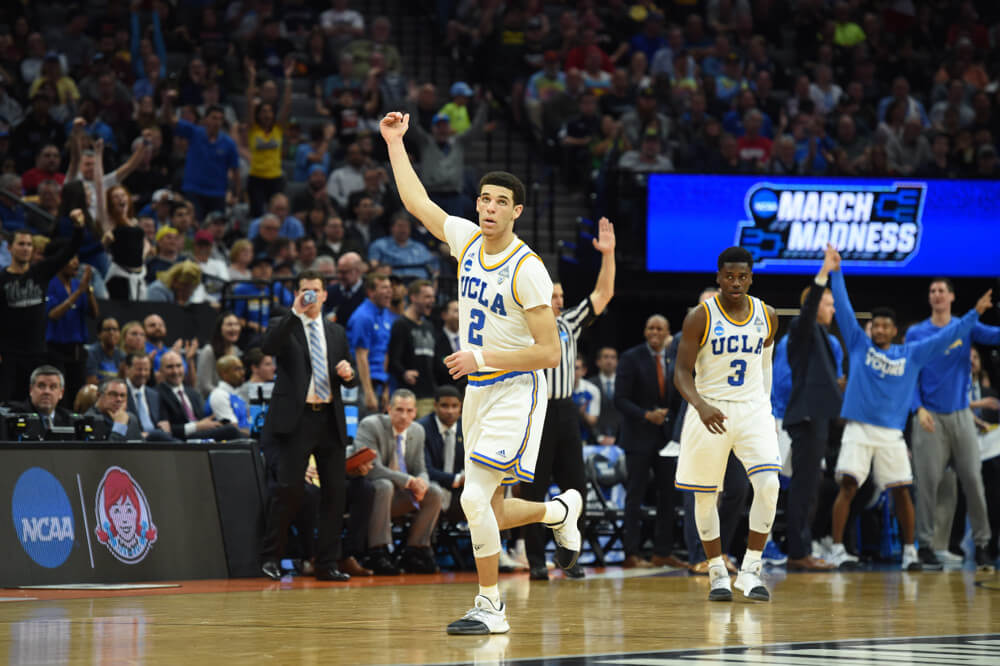
It’s the elite one-percent who are really getting screwed. We’re talking about one-and-done superstars like Lonzo Ball, Jason Tatum, and Josh Jackson, all of whom are now in the NBA. They’re the players whose jerseys fly off the shelves of campus stores, whose faces appear on giant billboards, and whose likenesses can be seen everywhere from the covers of $10 programs to $120 game tickets. Colleges profit off of these elite players in innumerable ways without ever giving them a chance to share in the revenue.
Fortunately, just because something is broken doesn’t mean it can’t be fixed. There are a number of practical solutions which would allow players to be properly compensated for the enormous revenues they help generate.
Call a Spade a Spade
The NCAA refers to basketball players as student-athletes, but let’s be perfectly honest: they’re essentially employees. They dedicate up to 43.3 hours per week to their chosen sport, and are obligated to go on school-sanctioned trips that cause them to miss significant amounts of class time. At some schools, basketball players are forced to miss up to one-quarter of their classes during the lead up to the Final Four.
It’s time for the NCAA to formally recognize this poorly kept secret and stop hiding behind the shield of amateurism. Once they do, players will be able to begin sharing in revenue and will be properly compensated for the prestige, notoriety, and wealth they bring to their respective schools.
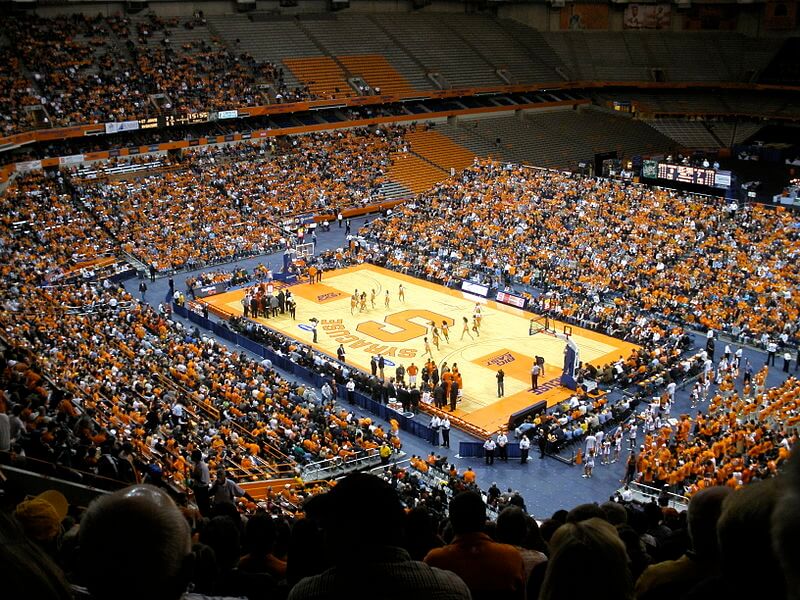
Allow Players to Participate in Revenue Sharing from Ticket Sales
The NCAA’s top programs routinely fill their stadiums for every home game. In 2017, Kentucky led all schools with an average of 23,461 fans per game, but Syracuse and Louisville were close behind with averages above 20,500 each. Even lesser programs like Nebraska, Creighton, and Arkansas averaged over 15,000 fans per game. Ticket prices vary, but in the case of Kentucky, they range between $54 and $275. That’s a lot of revenue, and athletes don’t see a single cent of it despite the fact that they’re the primary reason the stadiums are packed in the first place.
At the risk of sounding like Robin Hood (or his dad, Bernie Sanders), it’s time to redistribute the wealth from the colleges to the players by allowing them to share in ticket revenue. The NCAA could give each player an equal share, or it could devise a sliding scale based upon a player’s on-court performance and overall value to his team. According to such a scale, the best players would receive a larger portion of ticket revenue while the players at the end of the bench would receive a smaller portion.
Amount elite athletes could earn per year from revenue sharing: $150,000-$180,000
Allow Players to Sign Shoe Deals
One of the many ways college programs stay in the black is by signing lucrative shoe and apparel deals. UCLA recently inked a 15-year, $280 million deal with Under Armour, and the University of Texas made headlines in 2015 by signing a 15-year, $250 million extension with Nike. The deals are exclusive in nature and require athletes to wear uniforms and shoes from the associated brands. More often than not, much of the money finds its way into the hands of the coaches while the players get little more than free shoes and merchandise.
What if athletes were able to broker their own shoe deals like they do in the NBA? Under this scenario, every player would be a free agent and would be able to negotiate their own terms with the brand of their choice. The elite players would naturally attract larger offers, while the team’s scrubs would have to make due with free apparel and a small stipend. Colleges would see less revenue under this proposal, but they would continue to make money on separate deals for apparel and accessories.
Amount elite athletes could earn per year from shoe deals: $500,000-$1.5 million
Allow Players to Hire Agents
This isn’t a solution to the problem of compensation, per se, but it would help ensure fair compensation if and when players are able to sign contracts with the likes of Nike and Under Armour. Few 18-year-olds are equipped with the knowledge and maturity to enter into contract negotiations, and allowing players to hire agents to represent their best interests would be crucial to ensuring they are not taken advantage of. The NCAA could still play a valuable role at this stage by vetting all potential agents and weeding out any unscrupulous, self-serving pariahs. There are a lot of shameless silver-tongued devils like Pitino out there, and the NCAA could aid players greatly by keeping them at bay.
Partner with the NBA to Create a Paid Internship Program
The NBA currently operates a ten-week summer internship program for college students to build their work experience and learn the behind-the-scenes operations of the NBA league office. The position is mostly administrative in nature, but why not expand it to make it more hands-on? The league could select some of the NCAA’s most promising young players and allow them to participate in clinics and give them access to the same training facilities and support staff that professional players use on a daily basis.
The players would benefit by getting paid to train while learning the skills they need to excel at the next level. And the NBA would benefit by building relationships with its future stars, thereby easing the transition during their rookie campaigns. That’s a big win-win in everyone’s books.
Amount elite athletes could earn per summer from a paid internship: $10,000
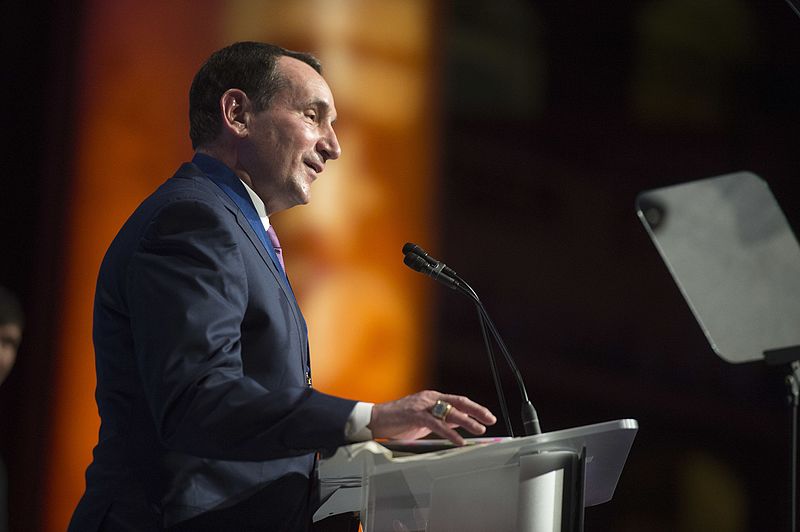
Pay Players for Appearances
NCAA athletes are obligated to make dozens of personal appearances every year for which they receive zero financial compensation. That’s in stark contrast to coaches, who are paid handsomely for their many bookings. Pitino, for instance, commands up to $50,000 per speaking engagement, while Duke’s Mike Krzyzewski fetches upwards of $100,000. Both men have earned the right to charge what they like based upon their many years of experience, but it’s hypocritical to think that top-flight basketball players don’t deserve a small pittance for their time and effort as well.
Amount elite athletes could earn per year from paid appearances: $50,000-$200,000
Pay Players Better for Summer Camp Participation
Student-athletes are allowed to accept paid positions as counselors at summer basketball camps, but like many things in the NCAA, there’s a catch. According to the association’s regulations, compensation is commensurate with the going rate for camp or clinic counselors of similar teaching ability and “may not be paid on the basis of the value that the student-athlete may have for the employer because of the athletics reputation or fame the student-athlete has achieved.”
In other words, the players are paid as students and not as athletes. That would be fine if the players only picked up a ball once a week at their local YMCA, but we’re referring to young men who have dedicated their lives to their craft. Parents shell out hundreds of dollars just so their kids can share the same airspace as these athletes and benefit from their expert tutelage. Their presence is the reason why Duke can charge $525 per participant for its basketball camps, and Syracuse can charge $595 per week at their own camps.
The camps are ultimately run by the coaches and administered by the athletic departments, but players deserve higher fees that reflect their popularity and considerable drawing power.
Amount elite athletes could earn per summer from participating in camps: $25,000-$50,000
Allow Players to Play in Semi-Pro Tournaments During the Offseason
If the NCAA is averse to revenue sharing, it should at least allow its players to benefit from their talent and popularity by participating in professional and semi-pro tournaments during the offseason. It’s simply unconstitutional to prevent someone from making a living, particularly when their sport is no longer in session and they’re not formally enrolled in school.
Amount elite athletes could earn per summer playing in semi-pro tournaments: $50,000-$100,000
Moving Forward
Pitino’s (second-most) sordid scandal is a black eye for the NCAA, but it has at least started an important conversation. Many people, including Kentucky Governor Matt Bevin, are now openly questioning why athletes don’t receive proper compensation.
“I think we should pay college athletes,” he said during an interview with Paducah radio station WKYX. “I really do. This idea that they’re not professionals is nonsense. The coaches are making millions of dollars a year. Shoe contracts are dictating what happens on our college campuses. Athletics directors and others associated with it … are making exorbitant fees. I don’t begrudge people making a high living. Good for them, and I mean that sincerely. But if that comes at the expense of those that are delivering the athletic prowess on the field, then maybe we should rethink the fact that this is really like the minor leagues for the professional sports associations, and they should be compensated and treated accordingly.”
We can only hope that Bevin will use his considerable influence to petition Congress and the NCAA to change the system and clean up the corruption that has run rampant for far too long. College basketball is broken, but it can be repaired.
Amount elite athletes could earn per year if all the aforementioned proposals were adopted: $2,040,000

Former Sports Writer
Ryan worked as an Editor and resident Lead NBA and MLB Writer for SB from 2017-19. He has authored his own weekly columns for Fox Sports and AskMen, and has created successful campaigns for the WWE, the NHL, and the NFL. Ryan's critically acclaimed stories have been published in 20 books.
